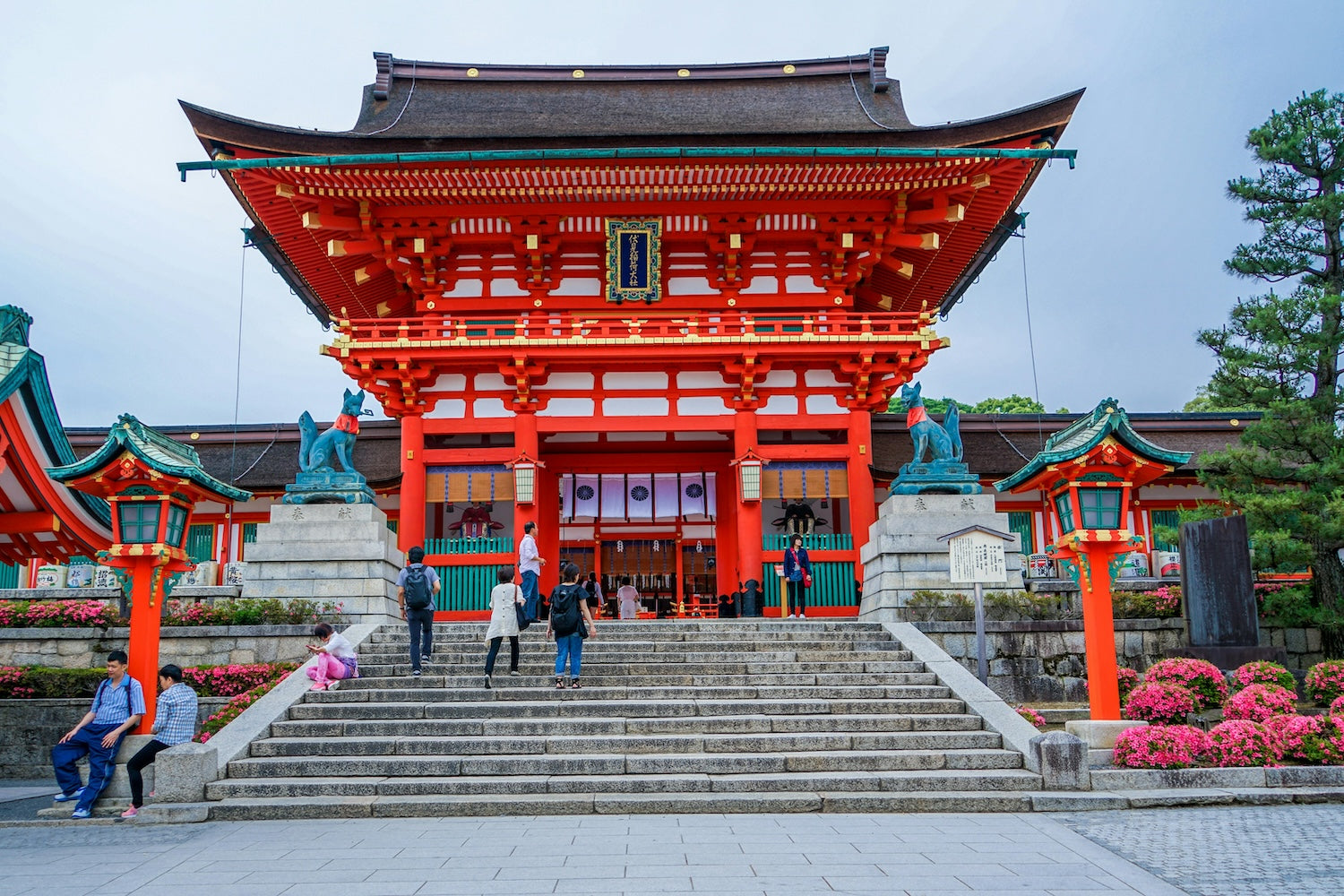Warm greetings from Kyoto!
Shortly before arriving, I read 47 Ronin and Memoirs of a Geisha. Though both books are considered revisionist history to a degree, they each paint a rich picture of the city. After soaking up these stories, my arrival felt particularly momentous. I couldn’t wait to start exploring the former capital of Japan. And as our list of must-see sites continued to grow, our trip stretched from 5 days to 7, each one more memorable than the last.
The first thing one notices about Kyoto is that its storied history of hospitality and pleasure echoes through the geisha districts, tea ceremonies and unique dining experiences. While the rest of the country has adopted modernity, Kyoto stays true to its roots, passing down traditions through the generations. You can still find washi (handmade paper) and chazutsu (tea canisters) in ancient specialty shops and old world crafts prevail in the hands of skilled artisans.
A Stroll On Ninenzaka Road
Though many of the historic, Japanese-style buildings have been transformed into modern souvenir shops, a trip down Ninenzaka Road still feels like stepping back into time. The sloping cobblestone street is a window into Kyoto’s past.
Even the local Starbucks is housed inside a century-old home and built in the traditional sukiya style. After placing your order and paying at the entrance, you follow a narrow passageway to pick up your drink at the counter in the back room. The long, narrow room gives the sense of being in a classic Kyoto teahouse. The second floor offers table seats, sofas, and a tatami room where you can take off your shoes and relax while enjoying your drink.
As we neared the end of our stroll of Ninenzaka road, we were rewarded with an unbelievable view of Yasaka Pagoda. Originally built by the Imperial Prince Shotoku in 589, the pagoda is said to have been inspired by a dream.

A Tea Ceremony in Uji
As a self-proclaimed tea addict, it would have been unthinkable to visit Kyoto without taking the 20-minute train ride to Uji, a city known for its matcha green tea. Looking forward to a quintessentially Japanese experience, we booked a traditional tea ceremony. We walked the streets as we waited for it to start, taking in the sights and scents of the nearby tea shops, tasting opportunities, and matcha flavored everything from ice cream to tiramisu.
The tea ceremony elevates the simple task of preparing a drink for a guest to an art form. It becomes an intricate series of movements performed in strict order. Both the preparer and the recipient have a role to play and etiquette to follow.
The ceremony began with removing our shoes and entering a room covered in tatamis. The tea master entered, bowed, and slowly prepared the matcha. When we received our tea, we were instructed to say, “o-temae chodai itashimasu” (I thankfully receive your tea), and turn the bowl twice before taking a sip. Each step and thoughtful movement is a ritual that tea masters train for years to master.
While one may think this ritual is largely confined to history, it’s still a thriving social activity and sought after skill. Later that week, I met someone at a jazz bar who was taking a career break and filling her time by – you guessed it – taking tea classes.

A Disney Princess in Nara
Only a short train ride from Kyoto, Nara is known for its very respectful deer that bow to you. The deer do expect something in exchange for their respectful display: cookies. The interaction was endlessly entertaining and brought to mind images of disney princesses frolicking among wildlife and feeding them sweets. It’s not until you are out of cookies that you become uninteresting to the deer. Then you start to ask yourself questions like, “How many cookies do these deer have each day? Is it an all-cookie deer diet? Who was the first to teach them to bow?” I imagined the original teacher was a very wise old man, affectionate towards the deer but unwilling to take on the responsibility of a full-time house pet. He was, clearly, not a Disney princess.
Eating & Drinking Our Way Through Pontocho
Arguably the single most atmospheric and beautiful street in all of Kyoto, this narrow alley is packed with vibrant restaurants on both sides, ranging from inexpensive yakitori to traditional and modern Kyoto cuisine. While this is a high-traffic street that’s very popular with tourists, there are still plenty of unmapped restaurants and coffee shops waiting to be discovered down narrow side alleys (even in the era of Google reviews).
One happy surprise was an unsuspecting speakeasy hiding behind a wall of empty bottles. Because, as they say, when life gives you bottles, you empty them and build a speakeasy! Another one of these hidden gems was a coffee shop run by one lone man. I wish I could tell you the names and locations, but alas, I do not recall and will leave them for you to stumble upon when you visit.

Closing Thoughts
Headed to Kyoto? Here’s a link to our saved Google Maps for some of our fave locations.
To wandering and wondering together,
Mallory








